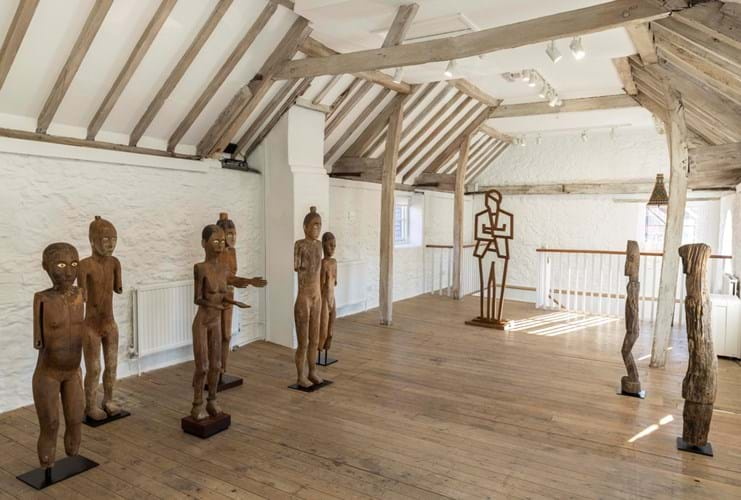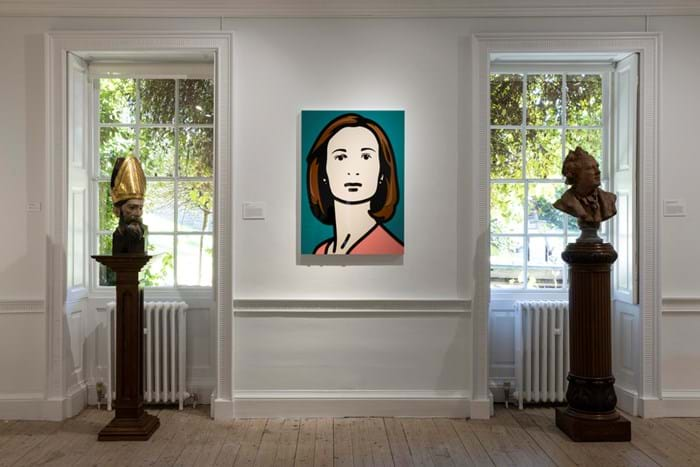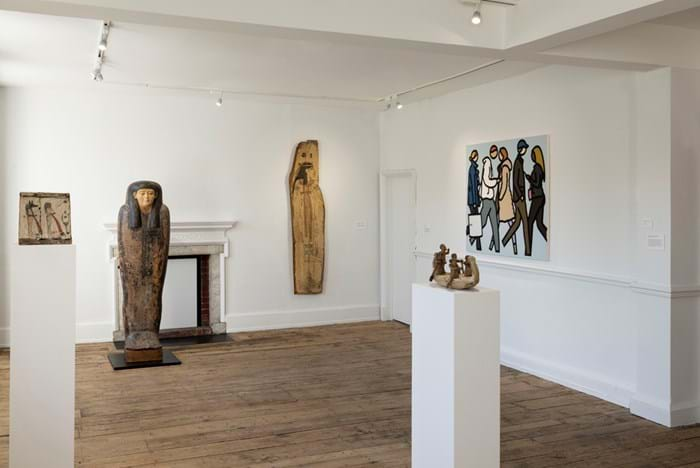Located in a warehouse near Liverpool Street, the lower floors of the studio were filled with his art, but on the top floor, she says “I was transported through time”.
The space was filled with his collection, from Egyptian sarcophagi to pre-historic hand axes to 17th and 18th century portraits. Though it was difficult to pin down his collecting style in a traditional sense, Binkin decided to combine the historic works he has amassed over the past two decades with some of his own pieces for her exhibition Julian Opie: Collected Works/Works Collected.
“It is a chance to take a backstage tour of Opie’s artistic process,” Binkin says of the show, which runs until March 6 in Petworth’s Newlands House Gallery.
Opie is known for his portraiture (one of his best-known works is the cover for Britpop band Blur’s album The Best Of) and walking figures rendered in thick yet spare lines.
Works featured in the show reflect a clear interest in historic depictions of the human face and form, “the way people rest on their hips, for example,” Binkin says. “The smallest nuance can change the atmosphere of the painting”.
Japanese woodblock prints, 19th century silhouettes, works of tribal African art and stills from anime films may range-wide in origin, but all reflect, simply but distinctively, the human form. In some cases, however, his interests stray to more ornate works, in cases such as portraits by Joshua Reynolds and Nicholas de Largilliére.
As an artist, Opie’s collecting habits can vary from those of the average collector – some contemporary pieces he has obtained by bartering, for example. For the most part, though, he buys through dealers, though sometime shifting his interests unexpectedly within the wider framework of his interests.
After 20 years of collecting, he still considers himself a ‘young collector’. But for Binkin there is still plenty to be mined from this short period of buying. With the show she puts the mirror back on the artist, creating, as she calls it, “a portrait of Julian Opie”.









